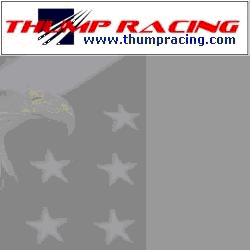2013DIBGT
I Hate Wheelhop
Just a thought for further consideration in terms of the Phase 2 options. Have you considered just going to the 302S FLCA w/Howe balls setup?
I can tell you from experience that the replacememt FLCA from Ford with the "Improved" Heat Shield is pretty much garbage also. Barely better then the non-shielded unit it replaces then you still have the damn non replaceable Ball J in the factory arms to come back and haunt you later and you have to do it all over again.
Doing the Bumpsteer process is pretty shitty and not something I would want to do very often (maybe once a lifetime..Lol). To add to that, if you arent doing this all yourself shops with experience setting up Bumpsteer are very few and far between.
Doah..another edit...Noticed you were thinking the Steeda Ball J in factory arms..if you go that route you may also want to consider tack welding those, I've seen more then a few reports of them having failures either popping out due to the hole in the FLCA fitment being less then ideal or the balls themself not being robust enough which then brings about other issues if they are welded in place.
I have a set sitting on the shelf that I decided not to use because of getting cold feet after seeing the issues some were having with them. This then prompted me to bite the billet and just go with the 302S setup instead. The 302S setup has been bulletproof for me thus far and have no regrets in that setup. I have a very hard 25K on mine thus far with no noticeable NVH or noise issues.
Just a thought to ponder
I can tell you from experience that the replacememt FLCA from Ford with the "Improved" Heat Shield is pretty much garbage also. Barely better then the non-shielded unit it replaces then you still have the damn non replaceable Ball J in the factory arms to come back and haunt you later and you have to do it all over again.
Doing the Bumpsteer process is pretty shitty and not something I would want to do very often (maybe once a lifetime..Lol). To add to that, if you arent doing this all yourself shops with experience setting up Bumpsteer are very few and far between.
Doah..another edit...Noticed you were thinking the Steeda Ball J in factory arms..if you go that route you may also want to consider tack welding those, I've seen more then a few reports of them having failures either popping out due to the hole in the FLCA fitment being less then ideal or the balls themself not being robust enough which then brings about other issues if they are welded in place.
I have a set sitting on the shelf that I decided not to use because of getting cold feet after seeing the issues some were having with them. This then prompted me to bite the billet and just go with the 302S setup instead. The 302S setup has been bulletproof for me thus far and have no regrets in that setup. I have a very hard 25K on mine thus far with no noticeable NVH or noise issues.
Just a thought to ponder
Last edited:


